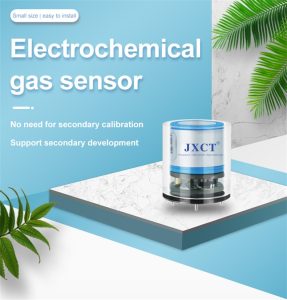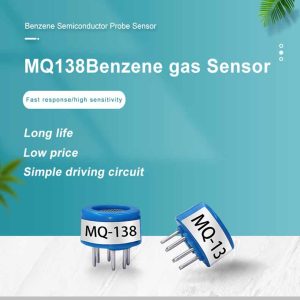Air pollution is one of the most pressing environmental issues we face today. The quality of the air we breathe directly impacts our health and well-being. With the increase in industrialization, urbanization, and transportation, air pollution levels have been on the rise. To address this issue, scientists and engineers have developed gas sensor technology to monitor and improve air quality.

Gas sensors are devices that detect and measure the concentration of various gases present in the atmosphere. They can detect both harmful gases, such as carbon monoxide (CO), nitrogen dioxide (NO2), and particulate matter (PM), as well as beneficial gases like oxygen (O2). These sensors provide real-time data that can be analyzed to determine the air quality and identify potential sources of pollution. With this information, policymakers and environmentalists can take necessary actions to improve air quality and protect public health.
One of the significant advantages of using gas sensors is the ability to detect air pollution quickly. Traditional methods of monitoring air quality involve collecting air samples and sending them to a laboratory for analysis. This process can take days, and sometimes weeks, depending on the location and the type of pollutant being tested. In contrast, gas sensors provide instantaneous results, allowing for immediate action to be taken if necessary.
Another advantage of using gas sensors is the ability to monitor air quality continuously. Traditional methods of monitoring air quality only take periodic measurements, which may not provide an accurate representation of the overall air quality. With continuous monitoring, changes in air quality can be detected immediately, allowing for quick interventions to prevent further pollution.
Gas sensors can also help reduce the cost of monitoring air quality. Traditional methods of monitoring air quality require the installation and maintenance of expensive equipment and infrastructure, along with the collection and analysis of numerous air samples. In contrast, gas sensors require minimal maintenance and can be installed at multiple locations throughout an area, providing comprehensive and cost-effective monitoring.
One of the most significant applications of gas sensors is in the management of indoor air quality. Indoor air pollution can be as harmful, if not more so, than outdoor air pollution. Poor indoor air quality has been linked to various health issues, including respiratory problems and allergies. Gas sensors can be used to monitor indoor air quality in homes, offices, schools, and other indoor spaces. This information can help identify sources of pollution, such as volatile organic compounds (VOCs) from cleaning products or building materials, and take necessary actions to improve indoor air quality.
Gas sensors are also being used in various other areas, including environmental monitoring, industrial processes, and transportation. In environmental monitoring, gas sensors can detect changes in air quality due to pollution or other factors. In industrial processes, gas sensors can monitor emissions from factories and help ensure compliance with environmental regulations. In transportation, gas sensors can be used to monitor vehicle emissions and promote the use of cleaner fuels and technologies.
Despite the benefits of using gas sensors, there are some challenges associated with their use. One of the major challenges is the need for calibration and maintenance. Gas sensors require regular calibration to ensure accurate measurements, and they must be properly maintained to prevent drift or malfunction.

Another challenge is the need for standardization. There are numerous types of gas sensors available, each with its own set of parameters and measurement techniques. To ensure that data collected from different sensors is comparable and accurate, there is a need for standardized methods of calibration and measurement.
In conclusion, gas sensor technology has revolutionized the way we monitor and manage air quality. They provide real-time data that can be used to identify potential sources of pollution and take necessary actions to prevent further contamination. With their ability to detect air pollution quickly, monitor air quality continuously, and reduce the cost of monitoring, gas sensors have become an essential tool in environmental sustainability efforts. Although there are challenges associated with their use, the benefits of using gas sensors far outweigh these challenges.
 : +86 155 8830 2704
: +86 155 8830 2704 : jxdziot@gmail.com
: jxdziot@gmail.com
